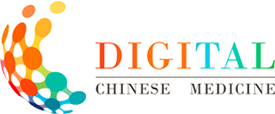Abstract:
Objective To predict the autophagy-related pathogenesis and key diagnostic genes of diabetic kidney disease (DKD) through bioinformatics analysis, and to identify related Chinese medicines.
Methods Data from sequencing microarrays GSE30528, GSE30529, and GSE1009 in the Gene Expression Omnibus (GEO) were employed. Differentially expressed genes (DEGs) with adjusted P < 0.05 from GSE30528 and GSE30529 were identified. Combining these DEGs with the human autophagy gene database, Gene Ontology (GO), Kyoto Encyclopedia of Genes and Genomes (KEGG) enrichment analyses, and protein-protein interaction (PPI) network analysis were conducted on the obtained DKD autophagy-related genes. Subsequently, the least absolute shrinkage and selection operator (LASSO) regression and support vector machine-recursive feature elimination (SVM-RFE) algorithms were adopted to select autophagy-related genes. The diagnostic capability of these genes was assessed through analysis with the external validation set from microarray GSE1009, and relevant Chinese medicines were inversely predicted using the SymMap database.
Results A total of 2014 DEGs were selected from GSE30528 and GSE30529, leading to the identification of 37 DKD autophagy-related genes. GO analysis indicated 681 biological mechanisms, including autophagy regulation and plasma membrane microdomain activity. KEGG enrichment analysis identified 112 related signaling pathways. PPI network analysis showed a marked enrichment of autophagy-related genes in DKD. Through LASSO regression and SVM-RFE, four core diagnostic genes for autophagy in DKD were identified: protein phosphatase 1 regulatory subunit 15A (PPP1R15A), hypoxia inducible factor 1 alpha subunit (HIF1α), deleted in liver cancer 1 (DLC1), and ceroid lipofuscinosis neuronal 3 (CLN3). The external validation set demonstrated high diagnostic efficiency for these genes. Finally, 146 kinds of potential Chinese medicines were predicted using the SymMap database, with heat-clearing and detoxifying medicine and blood-activating and stasis-eliminating medicine accounting for the largest proportion (25/146 and 13/146, respectively).
Conclusion This study analyzed and validated bioinformatics sequencing databases to elucidate the potential molecular mechanisms of DKD autophagy and predicted key diagnostic genes, potential therapeutic targets, and related Chinese medicines, laying a solid foundation for clinical research and application.









 下载:
下载: